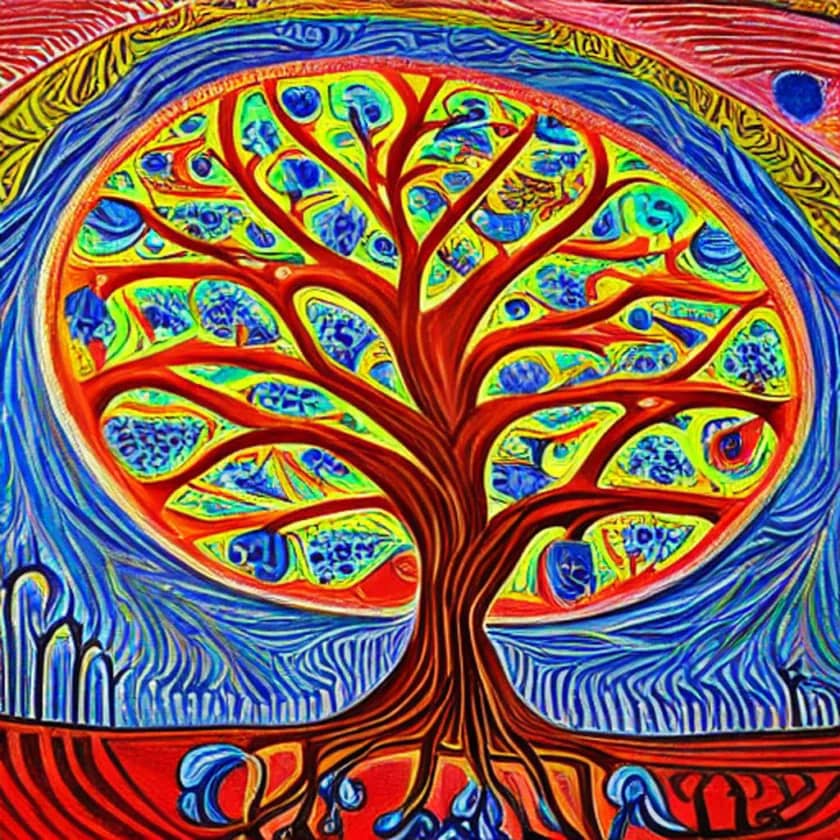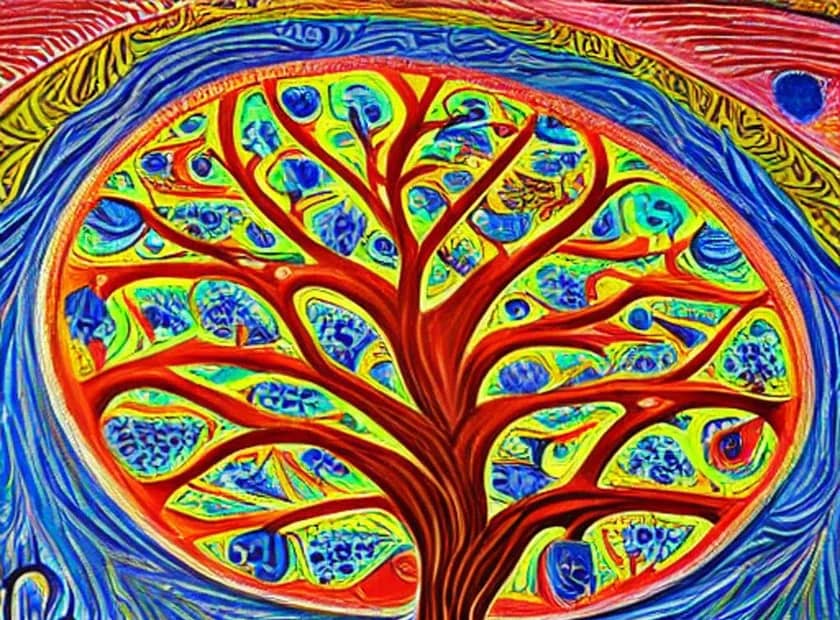Sacred trees in history
Throughout history, many cultures have revered and held sacred various trees and their symbolic significance. Here are a few of the most well-known sacred trees:
The Oak Tree
The oak tree was considered sacred by the ancient Celts, who believed that it was a dwelling place for their gods. Oak trees were also associated with strength and stability, and were often used as a symbol of power and protection.
The Yggdrasil Tree
The Yggdrasil tree was an important symbol in Norse mythology. It was believed to be the axis around which the nine worlds revolved and was a symbol of the interconnectedness of all things.
The Bodhi Tree
The Bodhi tree is a fig tree that is considered sacred in Buddhism. According to tradition, it was under this tree that the Buddha achieved enlightenment and it is therefore a symbol of spiritual awakening and liberation.
The Cedar Tree
The cedar tree was considered sacred by many cultures, including the ancient Egyptians, who used it to build their temples and tombs. The tree was associated with immortality, protection, and purification, and was believed to have the power to ward off evil spirits.
The Olive Tree
The olive tree was sacred in ancient Greece and was associated with peace, wisdom, and victory. The olive branch was also a symbol of peace, and is still used as such today.
These are just a few examples of the many sacred trees that have held spiritual and cultural significance throughout history. Regardless of the culture or belief system, trees have often been viewed as symbols of growth, renewal, and the interconnectedness of all things.
Video : Spiritual History of trees, a beautiful video by Fred Hageneder
What makes the tree sacred in culture and religion
The concept of sacred trees varies across cultures and religions, but they often share certain characteristics and beliefs. Here are a few reasons why trees might be considered sacred in various cultures and religions:
Association with the divine
Trees may be seen as symbols of the divine, embodying the essence of gods, spirits, or other supernatural beings. This belief is often tied to the idea of the tree as a mediator between the earthly and spiritual realms.
Link to creation myths
In many cultures, trees play a central role in creation myths and are seen as sources of life and fertility. For example, the Norse Yggdrasil is a tree that connects the nine realms of the universe and is seen as the axis of the world.
Spiritual power
Trees are often associated with spiritual power, and their presence is believed to bring blessings, protection, or other benefits to those who are near them. This belief is often tied to the idea of the tree as a living being with its own spirit.
Healing properties
In many cultures, trees and their parts (such as leaves, bark, or fruit) are used in traditional medicine and are believed to have healing properties. This belief is often tied to the idea of the tree as a source of spiritual and physical renewal.
Connection to ancestors
Trees may be seen as symbols of ancestry and continuity, connecting people to their past and the land where their ancestors lived. This belief is often tied to the idea of the tree as a long-lived being that outlives generations of people.
These are just a few examples of the many ways in which trees may be considered sacred in different cultures and religions. In each case, the belief in the sacredness of trees reflects a deep spiritual connection between humans and the natural world, and an appreciation for the power and mystery of trees.

Thank you for likes, shares and comments! 🌳🌴🌲🌵
Source OpenAI’s chatGPT Language Models, Dalle, AI trot and Fleeky
images Picsart and MIB
Botanicus Plus a GPT for starters and experts
Botnicus Plus boasts an array of new features, enhancing its global appeal and user interaction. These include: 1) Multilingual Support for accessibility in various languages. 2) Virtual Tours of famous botanical gardens and historical plant sites. 3) A Botanical Identification Tool for users to upload and identify plants. 4) Seasonal Guides and Tips tailored to local climates and regions. 5) Opportunities for users to engage in Collaborative Projects and Citizen Science Initiatives. 6) Advice on Sustainable Gardening Practices. 7) Interactive Q&A Sessions with botany experts. 8) Personalized Plant Care Reminders for gardeners. These features enrich Botnicus Plus’s mission to provide comprehensive, interactive, and culturally rich botanical education, fostering a deeper connection with the natural world.
Enjoy!👒
Invest in your future
Take time to learn
Embark on your journey in affiliate marketing and website creation alongside an incredible community and myself. Invest in your future by dedicating time to learn and earn. Take all the time you need to master the basics before aiming higher. Give it a try and sign up for free. You won't regret it! Discover the possibilities for yourself...


